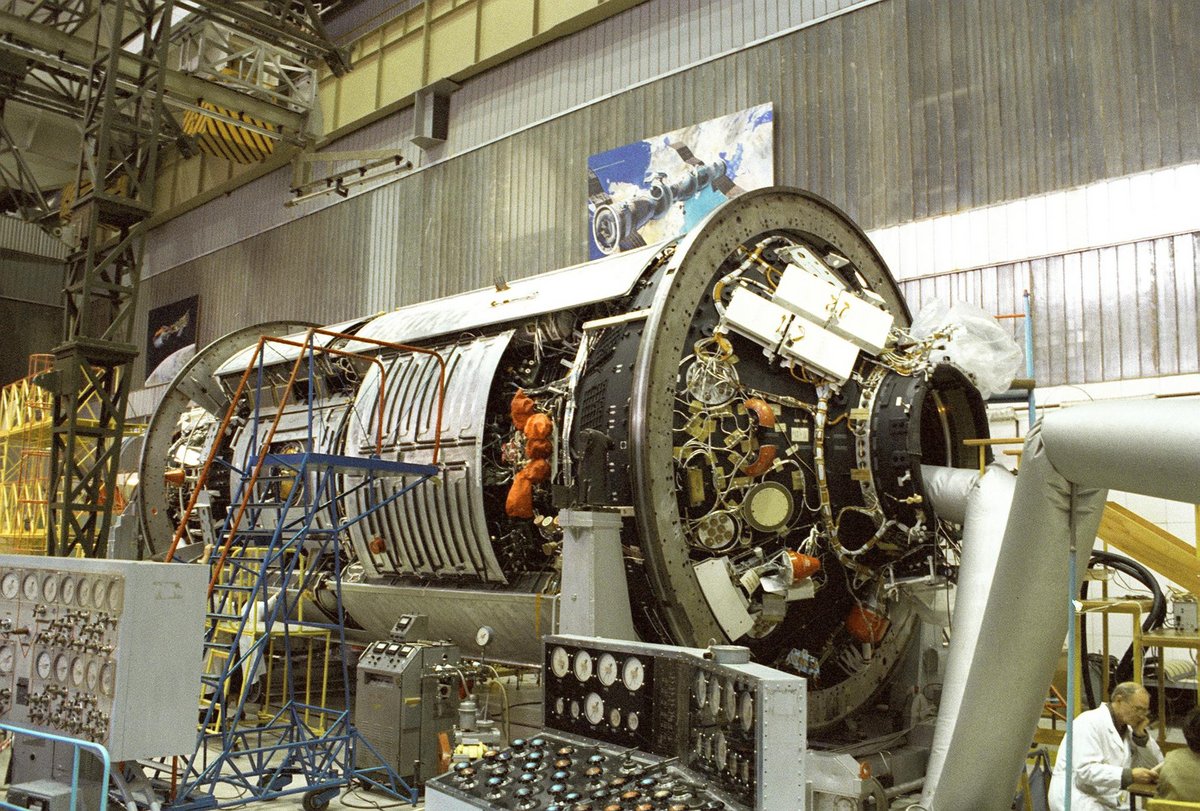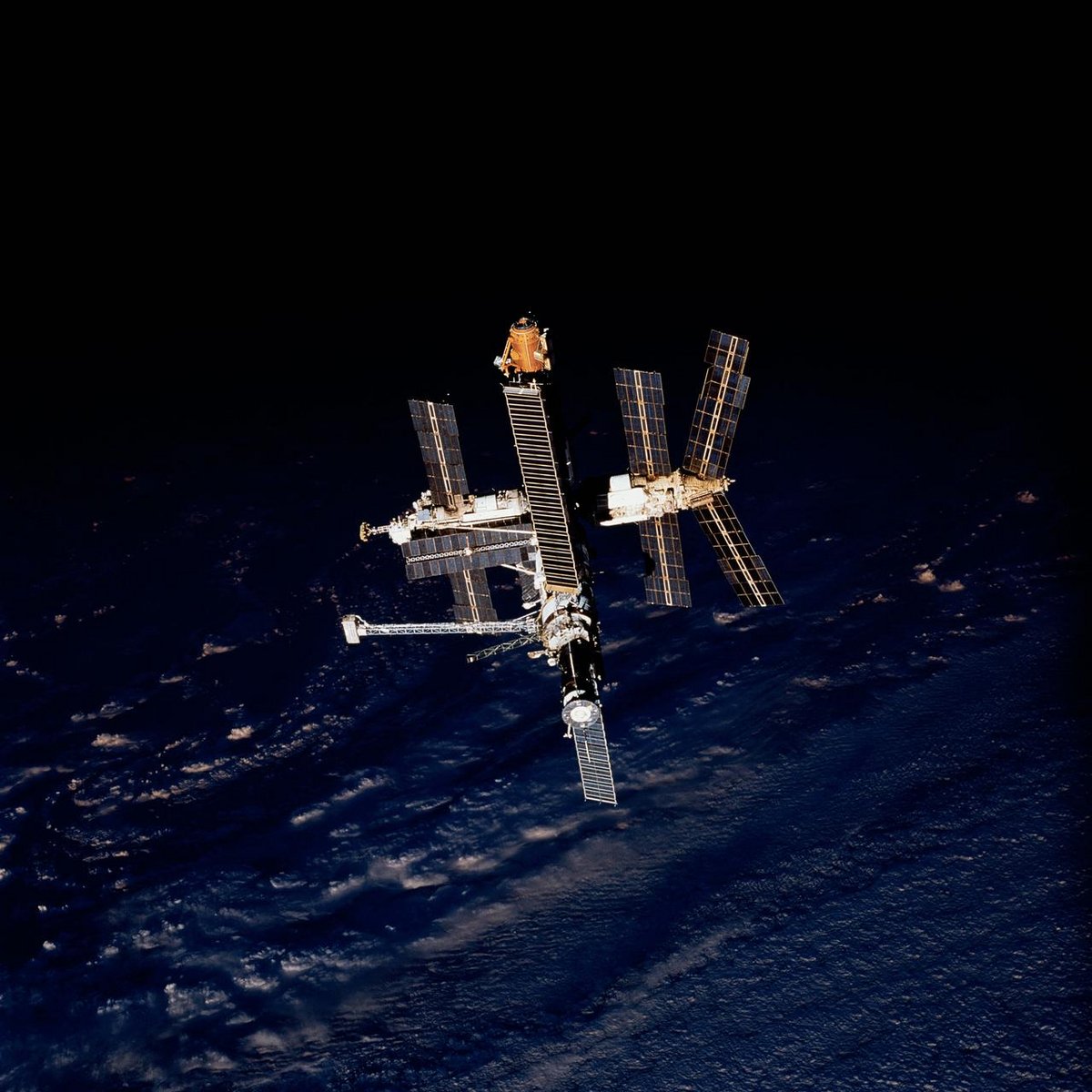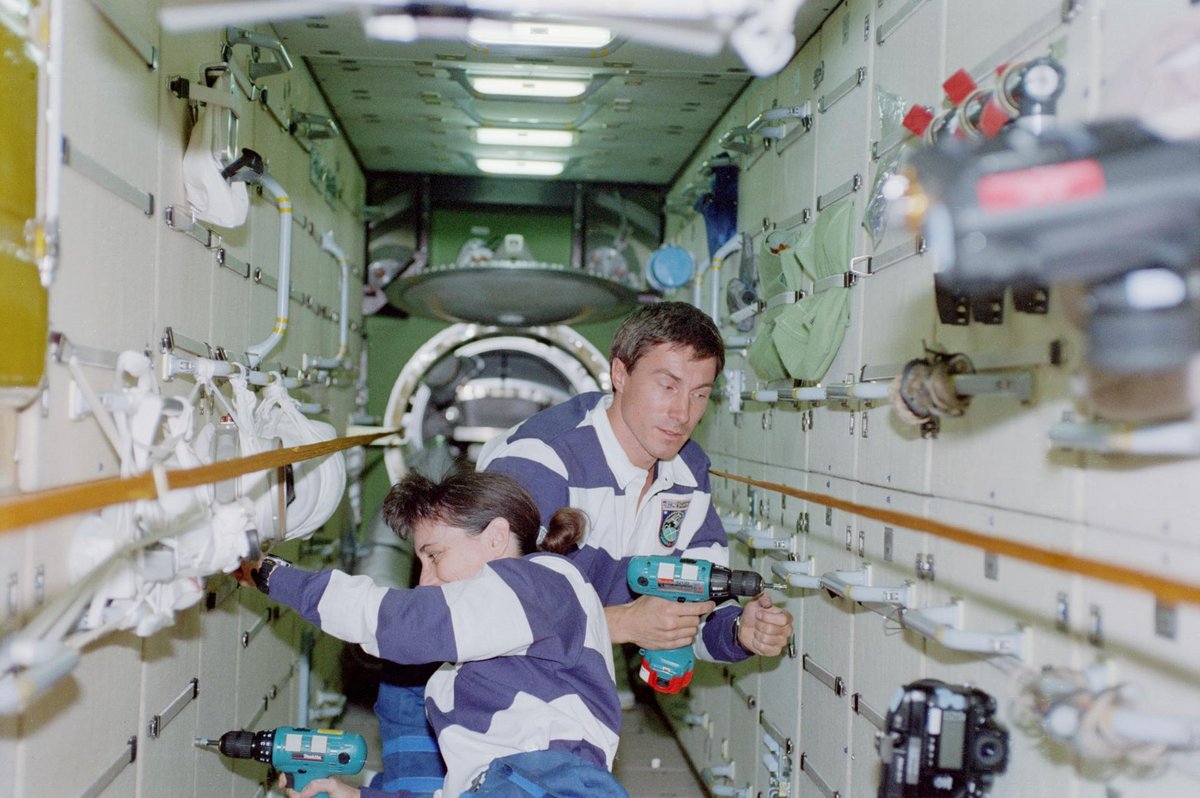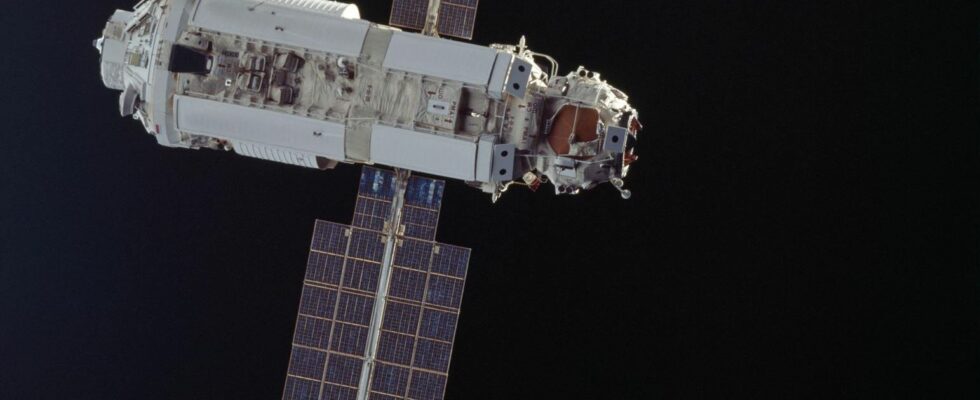Without being revolutionary, the arrival of this module in orbit marked the beginning of a long adventure and above all of exceptional cooperation between the largest space agencies. Zarya, which reached orbit on November 20, 1998, did not remain alone for long. And today it is part of the “backbone” of the ISS.
With the fall of the Soviet Union, the 90s got off to a bad start for Russia, which had to manage an economic crisis, a brain drain, and the dismantling of a large part of its activities in the Union’s satellite countries… Space is not spared, but it enjoys a remarkable boon, as the United States envies several key elements of Russia’s space program. On your mind ? Their incredible space station expertise. At the end of 1993, they signed the Gore-Chernomyrdin agreements with Russia which would allow exchanges and cooperation to send American shuttles to the Mir station, and coordinate the joint construction of an international space station.
On a technical level, however, it remains to be agreed on how to assemble a brand new orbital base between the two major space agencies. And what will be the first module? Let’s cut the suspense short, he’s Russian and his name is Zarya (Dawn).
A political-economic history
In the context of the crisis that Russia was going through at the time, the genesis of Zarya was complex. Because in the initial draft of the ISS, this module does not exist! This is another, ZVEZDA, which was always designed as the nerve center of the international station with the cockpit, central computer and maneuvering capabilities. Except that ZVEZDA is brand new and, above all, it is supposed to be connected to a host of other small Russian additions: solar panels, access hatches, specialized airlocks, storage module…
And all of this has to be in orbit before the Americans can dock there. Risk-taking is important on a technical level. This is why NASA will accept the plan of the Russian industrialist Khrunichev, who proposes a vehicle with a proven design as a “first brick” to be sent before ZVEZDA, and capable of flying alone.
The Russian authorities were reluctant at first, but an agreement was quickly reached since it was ultimately the Americans who financed it! Yes, Zarya is a Russian-designed module, built and operated in Russia, which took off from Baikonur and… whose very existence owes everything to NASA (there is also a small American flag on it).

It was a military model, but shush, we won’t say anything
Khrunichev’s genius was perhaps to propose his design called FGB (Functional Cargo Block in Russian), on which many Soviet space station modules were based. It is a pressurized space with numerous storage spaces, a life support system, an on-board computer, independent batteries and solar panels… In short, a small station in itself, but which has interconnection systems decided on a case-by-case basis and adapted according to needs.
Most of the Mir station modules come directly from the FGB design (Kvant 1 and 2, Kristall, Spektr, etc.), with several interior and exterior modifications to dock cargo ships, an airlock, experiments, etc. In itself, it is a “logical” choice for a first brick on the ISS… Except when we remember that the FGBs were developed in the mid-70s directly for the Soviet military! They were in fact part of the TKS vehicle designed to supply and extend the Almaz military stations as necessary, until this project was abandoned. Or how a very bellicose design became the center of a space station dedicated to peaceful and scientific cooperation!


A module on time!
This choice was, however, well inspired, because only five years after the signing of the first agreement, the first two Russian and American modules are ready! It was a success for Khrunichev, who managed to send Zarya to Baikonur at the beginning of 1998 for his final tests before takeoff. It is time, the Mir station is still active, but it is at the end of its life, with increasingly numerous and complex breakdowns to manage. It’s time for something new! Zarya is large, measuring 4.11 meters in diameter at its widest and 12.5 meters in length. The module weighs 19.3 tonnes at takeoff, knowing that it still carries a maximum of maneuvering fuel (3.8 tonnes) to place itself exactly in the desired orbit for the next station.
As we wrote above, Zarya is independent, so in theory it can spend several months, or even several years, alone and without an occupant in orbit, even if that is not its objective. The Proton rocket took off on November 20, 1998, and it was a success. The module extends its two large solar panels, turns on its thrusters to adjust its orbit to 51.6° inclination and 385 km altitude, communicates with the ground and can even turn on its guidance system for Russian automated vehicles, the Soyuz capsule and the Progress cargo ship.


The ISS was born with Zarya
But Zarya didn’t stay in orbit alone for long. Indeed, two weeks later, the Endeavor shuttle approached it, grabbed the module and thanks to several spacewalks, the astronauts added the American Unity central compartment on December 4, 1998. There was then a Russian module and a another American, it’s a real international station!
But… well, it’s still a little short to support life on board and above all, the other modules are a little late, in particular the large Russian piloting module ZVEZDA and the American Destiny laboratory. This will not prevent a few visits from automated vehicles or even another shuttle mission in 1999 which will remain docked for five days. The real crew rotations on the ISS will start in November 2000, and since then humans have constantly followed one another above our heads (23 years, that’s not nothing!).


A large, cluttered hallway
And Zarya, then? The module is still there today. All of its docking ports are used: at the rear to ZVEZDA, the one on the bottom with the Rassviet module, and on the front with the Unity module. The connections between these two (and the ISS’s central beam, located above Unity) are numerous, and this is one of the reasons why it is estimated that undocking Zarya would be virtually impossible from the “American” part of the station.
Inside, the Russian module is today only used for storage, on almost each of its walls boxes and other soft bags are lined up by the dozen: the very first module of the ISS is almost relegated to function luxury hallway. Its tanks, on the other hand, are interconnected with those of ZVEZDA, and are still used to store propellants to operate the large station.


Today Zarya is under surveillance. The module is slowly approaching double its expected lifespan of 15 years! But, as it is in the middle of the ISS, it is impossible to replace it: it will be destroyed at the same time as the rest of the station, through the atmosphere and in a controlled reentry over the Pacific Ocean. In the meantime, here he recently celebrated his 25th birthday!

3